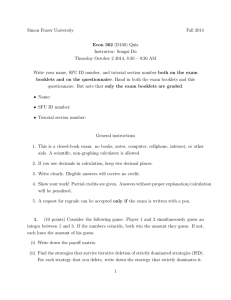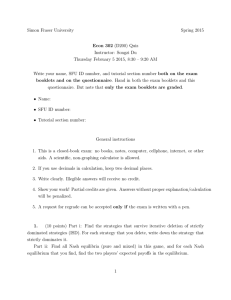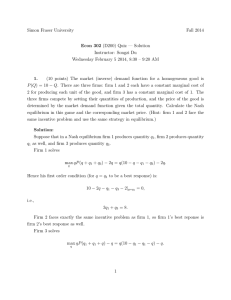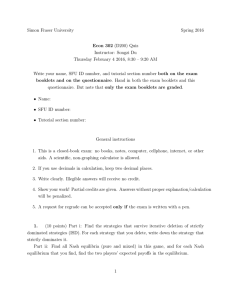Simon Fraser University Fall 2014 Econ 302 (D200) Quiz Instructor: Songzi Du
advertisement
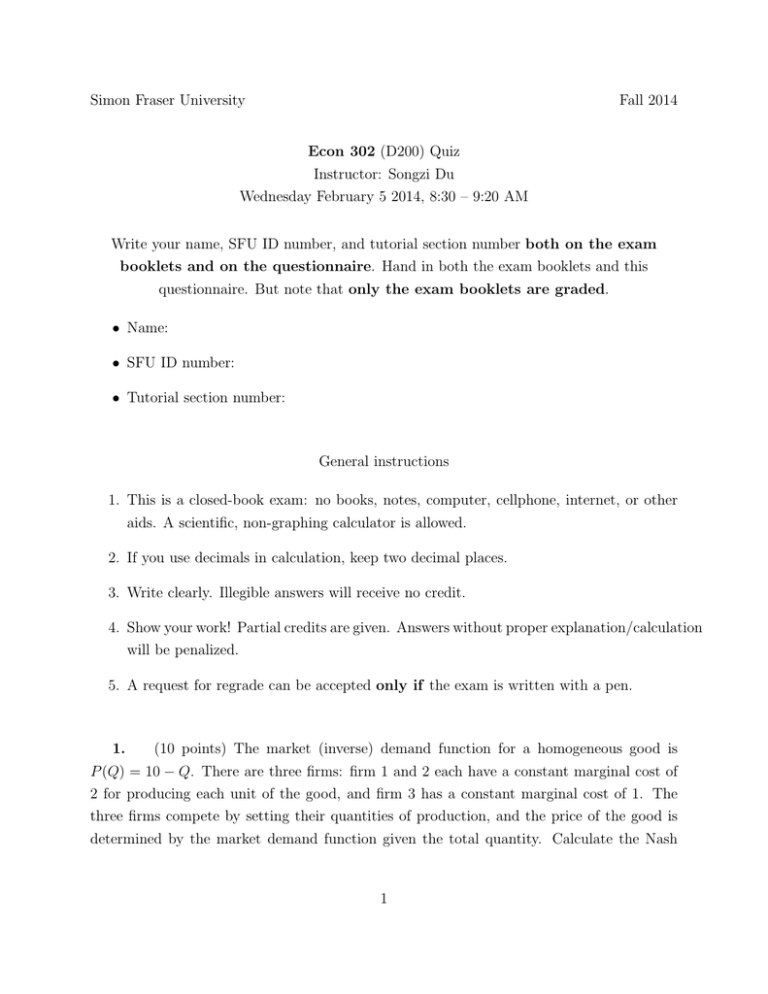
Simon Fraser University Fall 2014 Econ 302 (D200) Quiz Instructor: Songzi Du Wednesday February 5 2014, 8:30 – 9:20 AM Write your name, SFU ID number, and tutorial section number both on the exam booklets and on the questionnaire. Hand in both the exam booklets and this questionnaire. But note that only the exam booklets are graded. • Name: • SFU ID number: • Tutorial section number: General instructions 1. This is a closed-book exam: no books, notes, computer, cellphone, internet, or other aids. A scientific, non-graphing calculator is allowed. 2. If you use decimals in calculation, keep two decimal places. 3. Write clearly. Illegible answers will receive no credit. 4. Show your work! Partial credits are given. Answers without proper explanation/calculation will be penalized. 5. A request for regrade can be accepted only if the exam is written with a pen. 1. (10 points) The market (inverse) demand function for a homogeneous good is P (Q) = 10 − Q. There are three firms: firm 1 and 2 each have a constant marginal cost of 2 for producing each unit of the good, and firm 3 has a constant marginal cost of 1. The three firms compete by setting their quantities of production, and the price of the good is determined by the market demand function given the total quantity. Calculate the Nash 1 equilibrium in this game and the corresponding market price. (Hint: firm 1 and 2 face the same incentive problem and use the same strategy in equilibrium.) 2. (10 points) Part i: Find the strategies that survive iterative deletion of strictly dominated strategies (ISD). For each strategy that you delete, write down the strategy that strictly dominates it. Part ii: Find all Nash equilibria (pure and mixed) in this game, and for each Nash equilibrium that you find, find the two players’ expected payoffs in the equilibrium. W X Y Z A 10, 10 3, 4 10, 5 8, 6 B 4, 4 10, 10 8, 6 10, 5 C 1, 10 2, 12 3, 11 4, 10 D 5, 11 5, 11 8, 12 8, 2 3. (10 points) Recall the bystander game from lecture: n bystanders witness a crime. Each bystander has two actions: call the police or do not call the police. If the police is called by someone, each bystander gets a value of v; the bystanders who call the police each incur a cost of c. The payoff of each bystander is value (if any) minus the cost (if any). Suppose that v = 10 and c = 1. Find the symmetric, mixed-strategy Nash equilibrium as a function of n. And calculate the probability that no one calls the police in the equilibrium when (i) n = 2, (i) n = 10, and (iii) n = 25. 2
